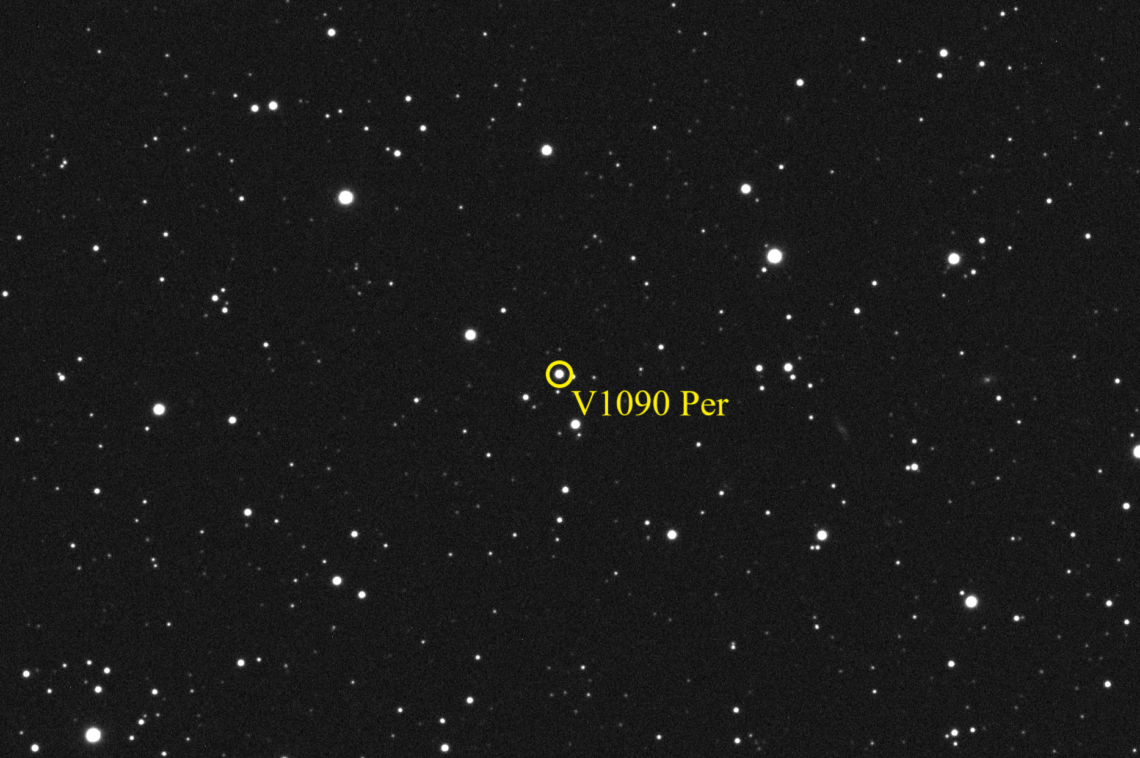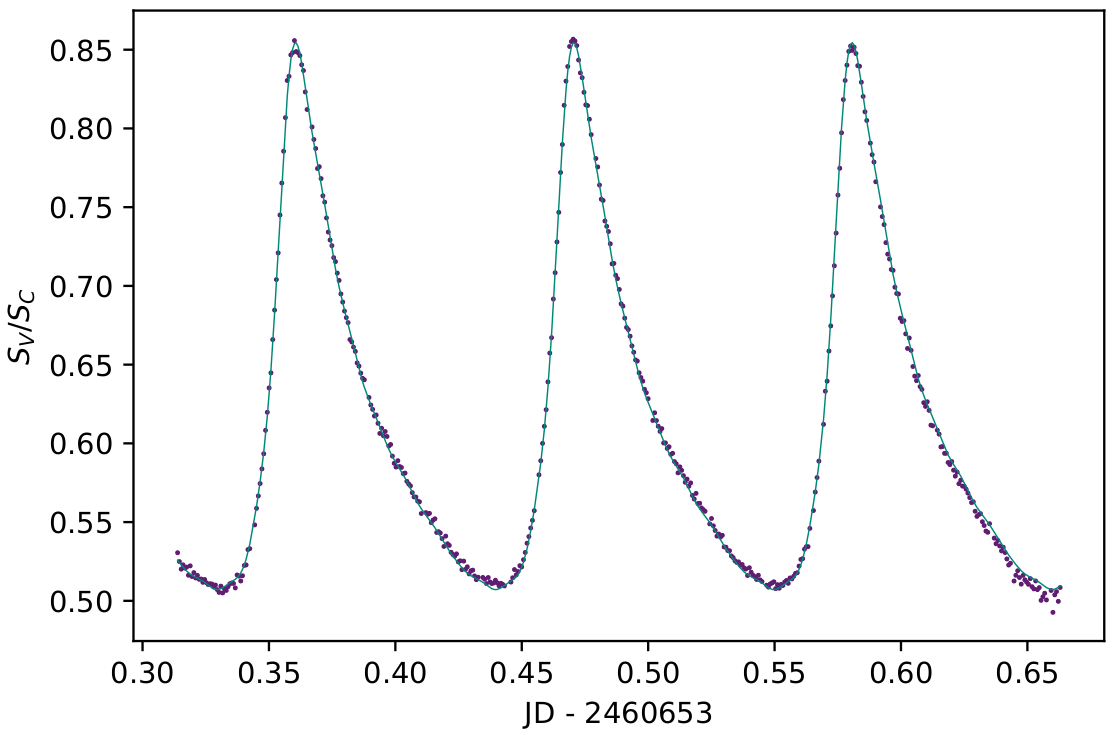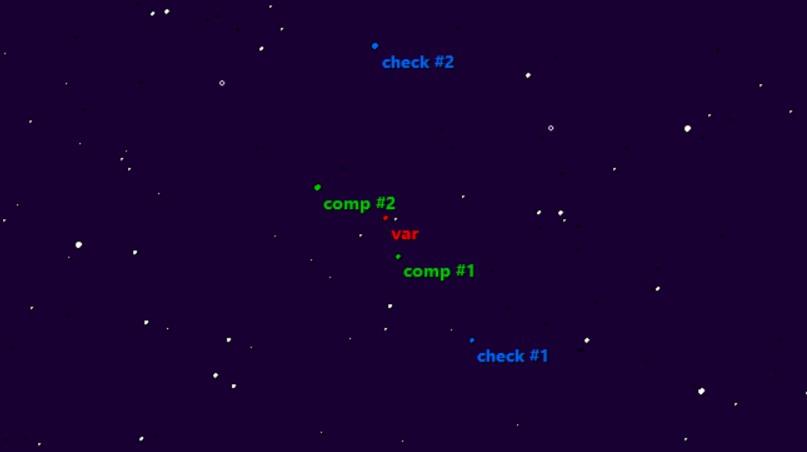Mate Bajdak & Jannis Werner
…how I wonder what you are. The star V1090 Per is certainly not little, but it does twinkle! This almost 5000 light years distant star in the Perseus constellation is a variable star. That means its radius and light intensity change in a regular pulsation. By measuring the star’s radiation flux over a time intervall we can determine the period of the star’s pulsation. A team of scientists at the TU Darmstadt took nearly 500 pictures of the star V1090 Per during one night and analysed them for data points of the variable star’s radiation flux in comparison to that of comparison stars (SV /SC). The figure below shows one of the pictures taken during the night.

In order to determine the period of the star’s pulsation, the data points were fitted to a curve using Python. The fitted curve is a Fourier series, which is especially suited to approximate periodical functions. The Fourier series is described by the following equation:

S(t) is the value of the curve as a function of time t. The period duration is represented by P . Ck and Dk are the Fourier coefficients which determine the shape of the curve. N is the abruption order of the series. The higher the N is, the more summands there are and the better the fit should be. However, for the purpose of this analysis, it is more than sufficient for N to have an order of magnitude of 10. The data points are shown in the graph together with the fit curve of the abruption order 10. JD means the Julian date.

The final result for the period duration of the star V1090 Per is 0.11 days or 2 hours and 38 minutes. That is typical for stars of this type.

